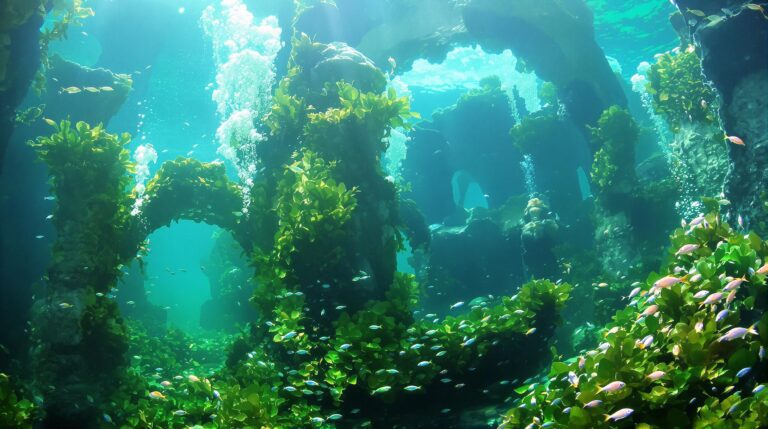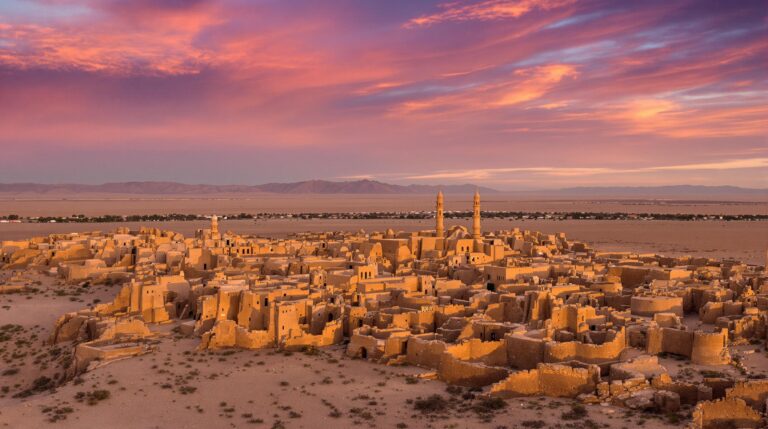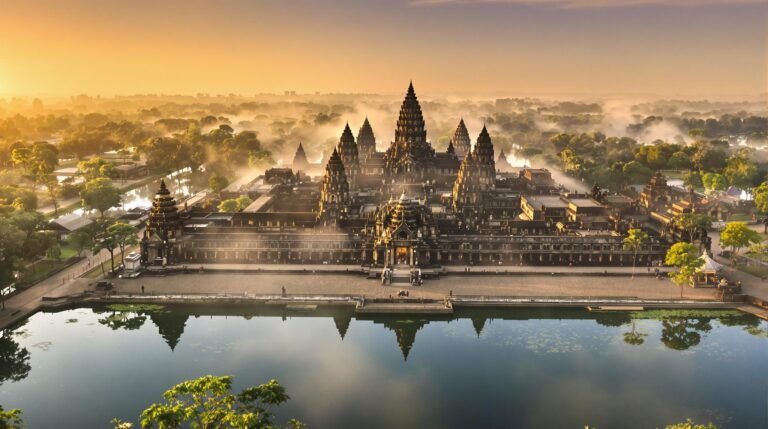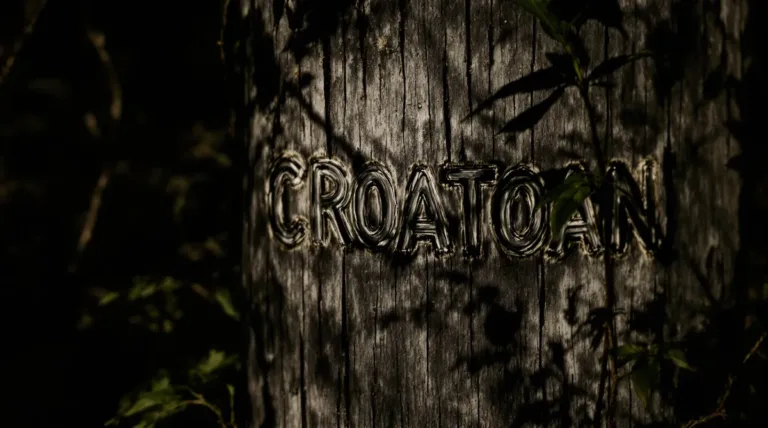Paititi: The Lost City of the Inca

Paititi, the fabled Lost City of the Inca, intrigues many with its promise of untold treasures and ancient wisdom.
Rooted in Quechua lore, this elusive sanctuary has sparked countless quests.
The allure lies not only in its riches but in the secrets it may hold about the Inca civilization.
As explorers and archaeologists piece together clues, the question remains: what truths about this enigmatic city are yet to be uncovered?
Principal Conclusions
Hide- Paititi is a legendary city from Quechua oral traditions, symbolizing the Incan legacy and a sanctuary during the Spanish conquest.
- The search for Paititi has led explorers to regions in Peru, Bolivia, and Brazil, surrounded by dense rainforests and complex terrains.
- Famous expeditions, including those of Percy Fawcett and Thierry Jamin, have fueled ongoing debates about Paititi's existence and archaeological evidence.
- Paititi represents a cultural and spiritual connection for Andean communities, embodying resilience against colonialism and respect for the land.
- The quest for Paititi blends myth and reality, inspiring adventure narratives while facing skepticism regarding the authenticity of discoveries and indigenous rights.
The Legend That Sparked Centuries of Obsession for Paititi
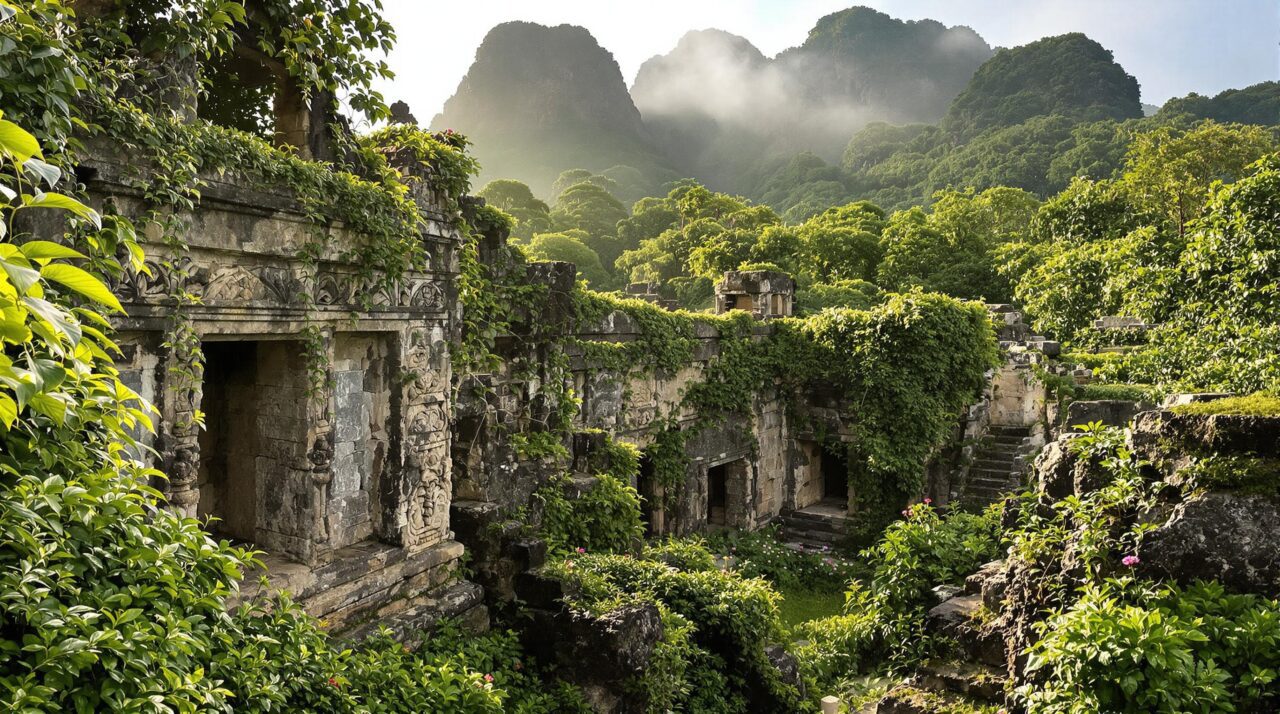
The legend of Paititi, rooted in Incan lore, tells the tale of a golden refuge that promised safety from the ravages of Spanish conquest.
As whispers of this mythical city spread through time, they ignited a fervent obsession among explorers and treasure seekers alike.
This enduring fascination reveals the deep cultural significance of Paititi, symbolizing not just lost wealth, but the resilience of a civilization against external threats.
Origins of the Paititi Myth in Incan Lore
The origins of the Paititi myth are deeply rooted in Quechua oral traditions, which speak of a magnificent city concealed beyond the Andes, brimming with untold riches.
Spanish chronicles further fueled this fascination, recounting tales of explorers who sought the elusive domain and its legendary treasures.
Through these narratives, the allure of Paititi transformed from mere folklore into a compelling obsession that has persisted for centuries.
Quechua Oral Traditions and Spanish Chronicles
While the whispers of ancient legends often fade with time, the tale of Paititi endures, deeply rooted in both Quechua oral traditions and the chronicles penned by Spanish conquistadors.
This enthralling narrative intertwines:
- Mystical descriptions of hidden treasures
- Prophecies of a city adorned in gold
- Legends of guardians protecting its secrets
These elements weave a tapestry of fascination, igniting the imaginations of explorers for centuries.
References to a Hidden City Beyond the Andes
Legends of a hidden city nestled beyond the Andes have long captivated the minds of adventurers and historians alike, providing a rich backdrop to the Paititi myth.
Esteemed chroniclers and indigenous tales speak of vast treasures and advanced civilizations, sparking an enduring quest for discovery.
This fusion of hope and mystery continues to ignite the imaginations of those yearning for freedom and exploration.
The Golden Refuge from Spanish Conquest
As the Spanish conquest swept through the Andes, tales of a golden refuge known as Paititi emerged from the ashes of Cusco’s fall, enchanting the imaginations of both indigenous survivors and European explorers alike.
These legends spoke of a hidden city, rich in gold and untouched by the invaders, igniting a relentless search fueled by greed and desperation.
The allure of Paititi not only symbolized the Incan legacy but also became a beacon for countless expeditions, each hoping to uncover the fabled haven lost to time.
Inca Retreat Legends During the Fall of Cusco
Amid the turmoil of the Spanish conquest, whispers of a hidden refuge known as Paititi began to circulate, enchanting the imaginations of both the indigenous people and European adventurers alike.
This legendary sanctuary was said to offer:
- Unfathomable wealth and treasures
- A safe haven for the Inca elite
- An eternal legacy of resistance against colonization
Such tales fueled a fervent quest for freedom.
How Stories of Gold Fueled European Expeditions
The allure of Paititi transcended mere folklore, capturing the imaginations of European explorers driven by tales of unimaginable wealth hidden in the dense jungles of South America.
These stories ignited relentless quests, as adventurers risked life and limb, traversing treacherous landscapes.
The promise of gold became a beacon, luring countless souls into the heart of uncharted territories, forever entwined with the dream of discovery.
Mapping the Myth: Where Could Paititi Be?
The elusive city of Paititi has sparked countless theories about its potential locations, with various sites across South America emerging as contenders in this enigmatic quest.
The rugged geography of the Andes and the dense Amazon rainforest complicate searches, obscuring the truth behind the legend.
As explorers and researchers navigate this treacherous terrain, the question remains: where might the fabled city truly lie?
Suspected Locations Across South America
The search for Paititi, the fabled lost city of the Inca, has led explorers to the dense jungles of the Peruvian Amazon and the enigmatic Madre de Dios region.
Equally enchanting are the vast landscapes of Bolivia’s Beni and Brazil’s Acre regions, where whispers of ancient treasures and hidden civilizations linger in the air.
Each suspected location offers a unique tapestry of history and myth, inviting adventurers to piece together the puzzle of this elusive Incan stronghold.
Peruvian Amazon and the Madre de Dios Region
Deep within the verdant embrace of the Peruvian Amazon lies the Madre de Dios region, a landscape shrouded in mystery and ripe for exploration.
This untamed wilderness holds tantalizing clues about Paititi’s possible existence. Key elements include:
- Lush biodiversity masking ancient pathways
- Indigenous legends whispering of golden cities
- Archaeological remnants hinting at Incan influence
Such features fuel the quest for this fabled city.
Bolivia’s Beni and Brazil’s Acre Regions
Countless explorers and historians have turned their gaze to Bolivia’s Beni and Brazil’s Acre regions, captivated by the promise of Paititi’s hidden treasures.
This lush, uncharted landscape, crisscrossed by rivers and cloaked in dense foliage, harbors whispers of ancient civilizations.
As myths intertwine with reality, adventurers seek the elusive city, igniting imaginations and fueling the quest for liberation from the mundane.
Why Geography Makes Paititi So Hard to Find
The elusive Paititi remains shrouded in mystery, largely due to the formidable geography that envelops it.
Dense rainforests, steep mountains, and twisting rivers create a labyrinthine barrier, complicating any attempts at discovery.
Coupled with natural hazards and treacherous terrain, these elements transform the search for the lost city into an intimidating quest, leaving explorers grappling with both the physical landscape and the weight of legend.
Dense Rainforest, Steep Mountains, and Rivers
While explorers and scholars have long sought the fabled city of Paititi, the very geography of the region poses formidable challenges that often thwart their efforts.
The dense rainforest, steep mountains, and winding rivers create a labyrinthine environment, making navigation perilous.
Key factors include:
- Thick vegetation obscuring visibility
- Rugged terrain complicating travel
- Fast-flowing rivers hindering access
These factors greatly obscure the truth of Paititi’s existence.
Natural Hazards and Inaccessible Terrain
Traversing the dense jungles and towering mountains of the Andes presents not only physical obstacles but also a myriad of natural hazards that further complicate the search for Paititi.
Treacherous terrain, sudden landslides, and unpredictable weather patterns challenge even the most seasoned explorers. The dense foliage conceals dangers, while swift rivers hinder access, making the elusive city a tantalizing mystery wrapped in nature’s embrace.
Famous Expeditions in Search of Paititi
Throughout history, the allure of Paititi has prompted relentless quests for its fabled treasures, beginning with the fervent colonial hunts that sought to unearth the lost riches of the Inca.
As centuries passed, adventurers in the 20th and 21st centuries continued this pursuit, driven by tales of unimaginable wealth hidden deep within the Amazonian jungle.
Each expedition not only added layers to the myth but also revealed the formidable challenges posed by the treacherous terrain and the enigmatic nature of the legend itself.
The Colonial Hunts for Hidden Riches
The relentless pursuit of Paititi, the fabled city of gold, captivated Spanish conquistadors and missionaries alike, spurred by tantalizing accounts of unimaginable wealth hidden within the Andes.
Early maps, etched with the promise of riches, fueled their fervent quests, intertwining ambition with the mystique of a lost civilization.
These expeditions, marked by both desperation and discovery, reveal a complex tapestry of greed, exploration, and the enduring allure of the unknown.
Spanish Conquistadors and Missionary Accounts
As rumors of untold riches spread through the ranks of Spanish conquistadors, the allure of Paititi became a powerful obsession that ignited a flurry of expeditions deep into the uncharted territories of South America.
Accounts from missionaries fueled these quests, detailing:
- Mysterious cities filled with gold
- Indigenous tales of hidden wealth
- Encounters with treacherous landscapes
These narratives stoked the fires of ambition and exploration.
Early Maps Suggesting a “City of Gold
Amidst the fervor of exploration, early maps began to surface, depicting tantalizing outlines of a rumored “City of Gold.”
These cartographic representations, crafted by explorers and chroniclers, reflected not only the fervent desires of the conquistadors but also the enigmatic geography of the Andean region.
Such maps ignited imaginations, leading countless expeditions fueled by the hope of uncovering unimaginable wealth and lost civilizations.
20th and 21st Century Explorers
In the quest for Paititi, the enigmatic lost city of the Inca, the 20th and 21st centuries have seen explorers like Percy Fawcett, whose mysterious disappearance in the Amazon has fueled countless theories and legends.
Meanwhile, Thierry Jamin‘s controversial expeditions have ignited debates within the archaeological community, as he claims to have uncovered evidence of the city’s existence.
These modern quests reveal not only the enduring allure of Paititi but also the complex interplay of ambition, mythology, and the relentless pursuit of discovery.
Percy Fawcett and the Disappearance That Haunts
Though the dense jungles of South America have long been a source of fascination and mystery, it was the enigmatic figure of Percy Fawcett who ignited a fervor for exploration in the early 20th century, particularly in the quest for the legendary city of Paititi.
His disappearance remains haunting, stirring imaginations with tales of:
- Unexplored territories
- Ancient civilizations
- Unsolved mysteries
Thierry Jamin’s Controversial Expeditions
Driven by an insatiable curiosity and the allure of ancient secrets, Thierry Jamin commenced a series of controversial expeditions into the heart of the Peruvian jungle, where whispers of Paititi beckoned.
His endeavors sparked debates among scholars and adventurers alike, as he unearthed artifacts and navigated treacherous terrain, challenging conventional narratives and igniting passions for discovery in those yearning for freedom from the past.
Archaeological Clues and Debated Discoveries
Amidst the dense jungles of South America, whispers of ancient ruins and enigmatic petroglyphs beckon explorers and scholars alike, suggesting the existence of Paititi.
Yet, while satellite imagery has revealed potential sites of interest, skepticism persists within the academic community, questioning the authenticity and significance of these findings.
This tension between hope and doubt fuels an enthralling discourse on the true legacy of the Inca civilization and the elusive treasures it may still conceal.
Ruins, Petroglyphs, and Satellite Findings
Amidst the dense foliage of the Amazon, unexplained stone structures hint at a once-thriving civilization, sparking debate among archaeologists about their origins and purpose.
These ancient remnants may also tie into a network of possible pre-Columbian roads, suggesting sophisticated engineering skills that challenge current understanding of Inca society.
As satellite imagery reveals more of these enigmatic features, the quest for Paititi intensifies, merging history with growing curiosity.
Unexplained Stone Structures Deep in the Jungle
As explorers investigate the dense foliage of the Amazon rainforest, they often stumble upon a series of enigmatic stone structures that hint at a forgotten civilization, potentially linked to the legendary Paititi.
These discoveries provoke curiosity and debate regarding their origins, including:
- Intricate carvings resembling ancient symbols
- Unusual construction techniques suggesting advanced engineering
- Alignment with celestial bodies, indicating possible ritual significance
Such findings deepen the allure of this lost world.
Possible Pre-Columbian Road Networks
Explorations of the Amazon rainforest have not only uncovered mysterious stone structures but have also sparked interest in the existence of pre-Columbian road networks that may have connected these ancient sites.
Archaeological clues, including intricate petroglyphs and satellite imagery, suggest a sophisticated transportation system.
These findings challenge long-held perceptions of isolated civilizations, revealing a complex web of connectivity among the Inca and their predecessors.
Skepticism and Academic Perspectives
The quest for Paititi is steeped in a blend of historical allure and scholarly skepticism, as researchers grapple with the fine line between myth and misinterpretation.
While some academics regard the tales of the lost city as mere legend, others are captivated by the possibility that hidden truths linger within these narratives.
This tension invites a critical examination of the evidence, challenging assumptions and prompting a reevaluation of what constitutes valid archaeological discovery.
Differentiating Myth from Misinterpretation
Although tales of Paititi, the fabled lost city of the Incas, have captivated explorers and historians alike, the distinction between myth and misinterpretation remains elusive.
- Ambiguous archaeological findings often fuel speculation.
- Local legends intertwine with historical narratives, complicating understanding.
- Skeptical perspectives challenge the authenticity of supposed discoveries.
These factors create a tapestry of intrigue, blurring the lines between reality and romanticized fiction.
What Scientists Think of the Paititi Narrative
Scholarly discourse surrounding the Paititi narrative often oscillates between fervent belief and staunch skepticism, reflecting a complex interplay of archaeological evidence and personal interpretation.
Some academics champion potential discoveries, while others highlight the lack of concrete proof. This dichotomy fuels ongoing debates, as researchers dissect ancient texts and artifacts, each contributing unique perspectives that shape the evolving understanding of the enigmatic lost city.
Cultural Significance Beyond the Treasure
Paititi transcends the allure of material wealth, embodying a profound cultural resonance for Andean communities.
To Indigenous peoples, it represents not only a storied past but also a sacred connection to the land and a declaration of resilience against colonization.
This legendary city inspires a renewed respect for nature and ancestral traditions, affirming its significance well beyond the treasures that might lie within its fabled ruins.
What Paititi Symbolizes to Andean Communities
For Andean communities, Paititi transcends the allure of riches, embodying a profound spiritual sanctuary and a repository of ancient wisdom.
Its mythical status intertwines with the region’s sacred geography, echoing the beliefs that shape their cosmology and identity.
As stories of this lost city circulate, they reinforce connections to a rich cultural heritage that continues to resonate through generations.
Spiritual Sanctuary or Royal Archive?
While the allure of treasure often captivates the imagination, the true significance of Paititi transcends mere riches, embodying a profound spiritual and cultural essence for Andean communities.
This legendary site represents:
- A sacred connection to ancestral wisdom.
- A repository of cultural identity and history.
- A symbol of resilience against colonial forces.
Paititi serves as both a spiritual sanctuary and a royal archive, enriching the Andean soul.
Connections to Sacred Geography and Cosmology
The allure of Paititi extends beyond its treasures, intricately woven into the fabric of Andean cosmology and sacred geography.
For indigenous communities, Paititi symbolizes a sacred connection to ancestral spirits, embodying a quest for balance between nature and humanity.
This mythical city serves as a beacon of hope and cultural identity, representing resilience, unity, and the enduring spirit of the Andean people amidst modern challenges.
Indigenous Perspectives and Respect for the Land
Indigenous perspectives on Paititi extend far beyond the allure of hidden treasure, rooted deeply in oral histories that have shaped community beliefs and identities for generations.
Modern Indigenous voices articulate their concerns regarding outsider expeditions, highlighting a profound respect for the land that transcends mere exploration.
This dialogue emphasizes the importance of recognizing cultural significance and the sacredness of the sites intertwined with their ancestral narratives.
The Role of Oral History in Shaping Belief
How do stories passed down through generations shape perceptions of place and identity?
Oral history weaves a vibrant mosaic of beliefs that honors the land and its ancestors. This narrative tradition fosters a deep connection to cultural heritage, emphasizing:
- The sacredness of natural landscapes
- The importance of ancestral wisdom
- The preservation of community identity
These elements invigorate respect for both history and the environment, transcending mere treasure.
Modern Indigenous Voices on Outsider Expeditions
Stories of ancient cities like Paititi have long captivated explorers and treasure hunters, yet modern Indigenous voices offer a profound counter-narrative that emphasizes the cultural significance of these sites beyond their material wealth.
These perspectives advocate for a deeper respect for the land, highlighting its spiritual essence and the interconnectedness of heritage, identity, and the environment, urging a shift from exploitation to stewardship.
The Lasting Allure of the Lost City
The legend of Paititi captivates the imagination, not only as a historical enigma but also as a recurring theme in popular media and conspiracy circles.
This magnetic draw continues to inspire modern adventurers and scholars alike, prompting ongoing expeditions fueled by whispers of ancient riches and lost knowledge.
As the search persists, the allure of Paititi remains a reflection of humanity’s enduring fascination with the mysteries of the past.
Paititi in Popular Media and Conspiracy Circles
Paititi, the legendary lost city of the Inca, has captured the imagination of storytellers and conspiracy theorists alike, weaving a vibrant fabric of adventure and intrigue.
From thrilling adventure novels to engrossing documentaries, the city is often entwined with myths of UFOs and advanced ancient technologies, fueling speculation and wonder.
This enduring fascination reveals not only a quest for hidden treasures but also a deeper yearning to connect with the mysteries of an ancient civilization.
From Adventure Novels to Documentaries
Although shrouded in mystery, the legend of a lost Incan city continues to captivate the imagination of adventurers and scholars alike, inspiring a lively mosaic of narratives that span from thrilling adventure novels to gripping documentaries.
- Adventure novels ignite the spirit of exploration.
- Documentaries explore archaeological pursuits.
- Conspiracy theories add layers of intrigue and speculation.
Each medium enriches the tapestry of Paititi’s enduring allure.
Myths Entwined with UFOs and Ancient Technology
What secrets might lie hidden within the tales of Paititi, where whispers of ancient technology and extraterrestrial encounters intermingle?
Enthusiasts speculate that the lost city harbors advanced knowledge and artifacts, possibly linked to UFO sightings and enigmatic legends.
These narratives captivate imaginations, intertwining history and fantasy, as seekers of truth navigate the blurred lines between myth and reality, urging exploration of the cosmos and our ancient past.
Why the Search Continues Today
The quest for Paititi persists, fueled by a potent mix of government-sanctioned expeditions and fierce legal disputes over territory.
In the dense jungles of South America, adventurers weigh the tantalizing prospects of untold riches against the formidable risks that nature and bureaucracy impose.
This delicate balance of risk versus reward continues to captivate explorers and historians alike, driving the enduring allure of the lost city.
Government-Approved Expeditions and Legal Battles
As explorers continue to be captivated by the legend of Paititi, government-approved expeditions have emerged as an essential means of traversing the complex landscape of legal and territorial challenges surrounding the search for the lost Incan city.
These expeditions often face:
- Stringent regulations
- Environmental protections
- Indigenous land rights
Navigating these hurdles not only tests their resolve but also deepens the mystery of Paititi’s allure.
Risk vs Reward in the Jungles of South America
While the dense jungles of South America conceal countless secrets, it is the quest for Paititi that embodies the ultimate risk versus reward dynamic.
Explorers face treacherous terrain, unpredictable weather, and potential wildlife encounters, yet the promise of unimaginable riches and lost Incan heritage fuels their determination.
This duality captivates adventurers, luring them deeper into the wilderness in search of glory and discovery.
Wrapping Up
As the sun sets behind the rugged Andes, casting shadows over the landscape, the legend of Paititi endures like an ancient whisper in the wind.
Each expedition is a thread woven into the intricate fabric of its myth, binding explorers to the dreams of golden cities and lost cultures.
The allure of Paititi remains an unquenchable flame, igniting the hearts of those who dare to seek the echoes of a civilization that once danced among the stars.
